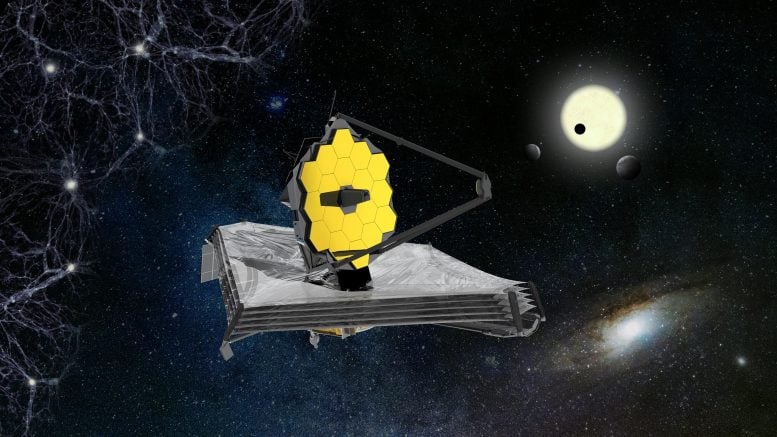
The General Observer scientific observations for the NASA/ESA/CSA James Webb Space Telescope’s first year of operation have been selected. Proposals from ESA member states comprise 33% of the total number of selected proposals and correspond to 30% of the available telescope time on Webb.
The NASA/ESA/CSA James Webb Space Telescope will be the world’s premier space science observatory when it launches later this year. Webb will solve mysteries about our Solar System, look at distant worlds around other stars, and probe the mysterious structures and origins of our Universe. Webb is an international program led by NASA with its partners, the European Space Agency (ESA) and the Canadian Space Agency (CSA).
Mission officials for Webb have announced the selection of the General Observer programs for the telescope’s first year, known as Cycle 1. These specific programs will provide the astronomical community worldwide with their first extensive opportunity to investigate scientific targets with Webb. The selected proposals address a wide variety of science areas and will help fulfill ESA’s overarching mission to further our understanding of the Universe and our place in it.
General Observer time with Webb is extremely competitive. As a result, the proposal selection process is rigorous. Members of the astronomical community were assigned to different panels covering broad scientific topics. Of these, 52 were from ESA member states. The panels met virtually, owing to the COVID-19 pandemic, over the course of three weeks and members spent additional countless hours reading and assessing the proposals.
A total of 1172 proposals were received before the deadline. Scientists from 44 countries applied for a portion of the 6000 observing hours made available. This represents about two-thirds of all Cycle 1 observing time, the rest of which is allocated to Early Release Science and Guaranteed Time (GTO) programs. Of the 266 selected observing proposals, 33% are from ESA member states, corresponding to 30% of the available telescope time on Webb during the first cycle. Furthermore, of the selected proposals, 41% will primarily use Webb’s NIRSpec instrument and 28% will primarily make use of the MIRI instrument.
“We celebrate the very successful partnership between the European Space Agency and our colleagues at NASA and CSA. We look forward to the beautiful images and spectra and the amazing discoveries that Webb will make in this first year of observations,” said Günther Hasinger, ESA Director of Science.
“At ESA, we are thrilled to see the great engagement and fantastic success of the European astronomical community in obtaining precious observation time on this extraordinary mission, the James Webb Space Telescope,” said Antonella Nota, Head of the ESA Office at the Space Telescope Science Institute (STScI) in Baltimore, USA.
ESA provided two instruments to the James Webb Space Telescope mission. This includes the entirety of the NIRSpec instrument, a near-infrared spectrograph that will enable large spectroscopic surveys of astronomical objects such as stars or distant galaxies. ESA also has a 50% share of the MIRI instrument, the only instrument on the telescope that is capable of operating at mid-infrared wavelengths. The telescope will launch on an Ariane 5 rocket from Europe’s Spaceport in French Guiana.
The full list of General Observer programs is available here.